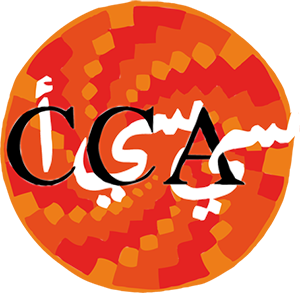Libya is one of the richest countries in the Mediterranean basin for archaeology and cultural heritage, with five enlisted UNESCO World Heritage Sites. The ancient Greco-Roman cities of Cyrene in the east, Sabratha and Leptis Magna in the west, have some of the best-preserved archaeological remains, presenting many amazing mosaics.
The armed conflict that started in January 2011, leading to the Gaddafi regime’s fall in October of the same year, raised concerns in the international community for the safety of archaeological sites in Libya.
An article in Nature, of the 2nd of March 2011, reports that “The regime’s crackdown and the resulting conflict — as well as subsequent chaos and risk of looting — also threatens ancient archaeological sites, as have recent uprisings in nearby countries”.
These concerns were picked up by international organisations involved in the preservation of cultural heritage. In June 2011 the UNESCO Director-General divulgated a call for the protection of two of the World Heritage Sites, the Old Town of Ghadamès and Leptis Magna.
Blue Shield, an international NGO born in 1954 as emblem of the Hague Convention for the Protection of Cultural Property in the Event of Armed Conflict, declared two official statements highlighting the threats faced by Libyan cultural heritage, the first in March and the second in June 2011.
Particularly, concerns were focused on the site of Leptis Magna: in June 2011 the Washington Post reports fears that the site could become a target for NATO bombing if found out to be a military basis of Gaddafi’s troops.
Fortunately, later in the year it seemed that Libya’s archaeological sites had survived the conflict with little damage: in an article of November 2011 Mustafa Turjman, head of research at the national department of archaeology (who recently gave an interview on this blog), stated that Tripoli’s National Museum had suffered little damage, mainly concerning symbols of Gaddafi’s regime.
In this context, a successful initiative was the establishment of a “No Strike List” by the ‘Blue Shield Committee’ and ‘The International Military Cultural Resources Work Group’ in cooperation with NATO, indicating sites that were to be kept safe from the international military intervention.
Crucial was the work of local professionals: in November 2011 an article in Culture in Development titled “Libyan World Heritage Sites Safe”, reported that the international team “was very impressed by the excellent precautionary measures of the local museum professionals and archaeologists”.
After the fall of Gaddafi in October 2011, and the establishment of a temporary government (NTC), efforts have focused on continuing the safeguard of these important sites. Even though the armed conflict is officially over, there are still serious threats to archaeological sites in Libya. One of these is the looting and smuggling of antiquities, as well as uncontrolled development.
Unfortunately, similar risks have become real in some cases, the most evident one is the demolishment of part of the ancient necropolis of Cyrene for selling building lots. The UNESCO site of Tadrart Acacus, presenting rock art from as early as the 12thmillennium B.C., was recently vandalised with graffiti.
UNESCO has launched an initiative to promote training and awareness of this difficult situation, as reported by The Tripoli Postand and Libya Herald.
The challenge that Libya faces now, in a post-revolutionary phase still tormented by internal conflicts, is the establishment of a system to ensure the protection of its unique cultural heritage. William Brown, non-resident senior fellow in the Global Economy and Development program, gives a detailed analysis of the situation in his essay “Heritage, Democracy and Development in Libya”, indicating as possible aims a remake of heritage laws, the strengthening of cultural heritage authorities, and a public awareness campaign.
List of sources:
02/03/2011 Nature, Libya’s ‘extraordinary’ archaeology under threat
14/06/2011 UNESCO, The Director-General calls for the protection of the Old Town of Ghadamès
14/03/2011 Blue Shield Statement of Libya
21/06/2011 2nd Blue Shield Statement of Libya
15/06/2011 The Washington Post, Fear for Libya’s Roman ruins
03/11/2011 Culture in Development, Libya’s historic treasures survive the revolution
04/01/2012 NATO, Protecting Libya’s heritage
30/09/2011 Culture in Development, Libyan World Heritage Sites Safe
03/06/2014 Archaeology, Prehistoric rock art in Libya vandalised
06/08/2012 The Tripoli Post, UNESCO Signs Agreement with Libya on Protection of Cultural Heritage Sites
25/09/2013 Libya Herald, UNESCO training to combat the looting of Libyan antiquities
08/11/2011 William Y. Brown, Heritage, Democracy and Development in Libya
